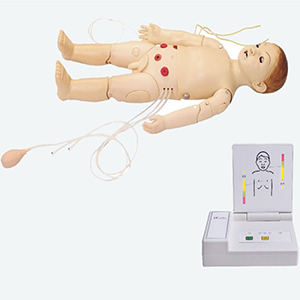24-10-2024
ADA MED SUPPLY LIMITED
In the field of first aid education, children's comprehensive first aid training model, as an innovative teaching tool, is gradually receiving more and more attention and recognition. This model is designed to simulate real first aid scenarios, so that learners can practice in a simulated environment, so as to improve their first aid skills and ability to cope with emergencies. So, can the comprehensive first aid training model for children really provide practical training experience?
First of all, from the design of the model, the comprehensive first aid training model for children highly simulates the physical characteristics and physiological responses of children. The appearance, weight and touch of the model are as close as possible to the real children, so that learners can feel the touch and experience similar to the real scene in the operation process. At the same time, the model also has a variety of first-aid operation functions, such as cardiopulmonary resuscitation (CPR), airway management, hemostatic dressing, etc., so that learners can carry out a full range of first-aid training in a simulated environment.

Secondly, the model is also very practical in function. It can not only simulate a child's breathing, heartbeat and other physiological responses, but also provide feedback according to the learner's operation, such as simulating the effect of cardiopulmonary resuscitation when it is done correctly, and simulating ineffective or harmful consequences when it is done incorrectly. This instant feedback mechanism allows learners to constantly adjust their manipulative techniques in practice, thus improving the accuracy and effectiveness of first aid skills.
In addition, it has a high degree of repeatability and durability. This means that learners can consolidate and improve their first aid skills over multiple practice sessions without worrying that the model will break or fail due to frequent use. This durability also provides strong support for the popularization and promotion of first aid education.
To sum up, the comprehensive first aid training model for children can indeed provide practical training experience. It not only simulates real first aid scenarios and children's physical characteristics, but also helps learners to constantly adjust and optimize their manipulative techniques through instant feedback mechanisms. At the same time, the model's high repeatability and durability also provide learners with continuous practice and improvement opportunities.